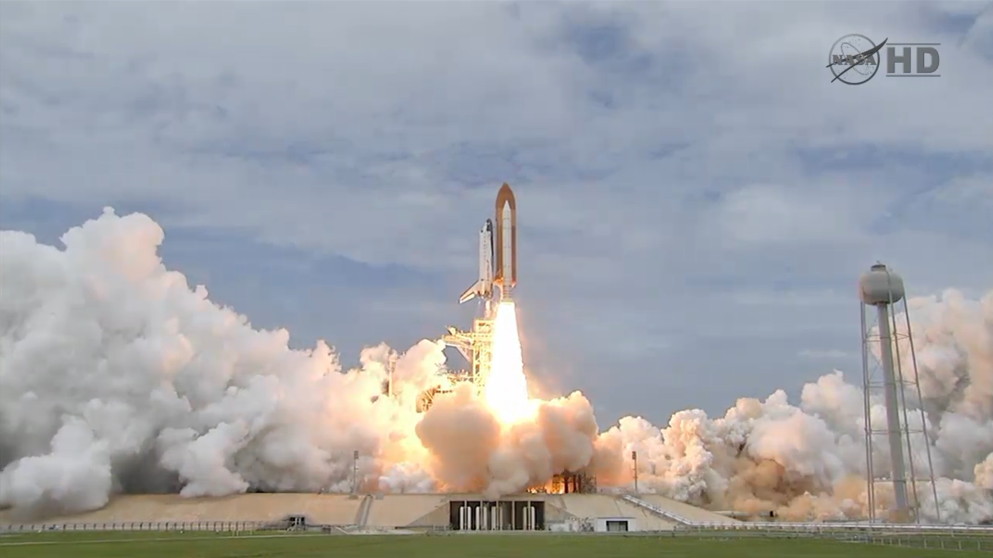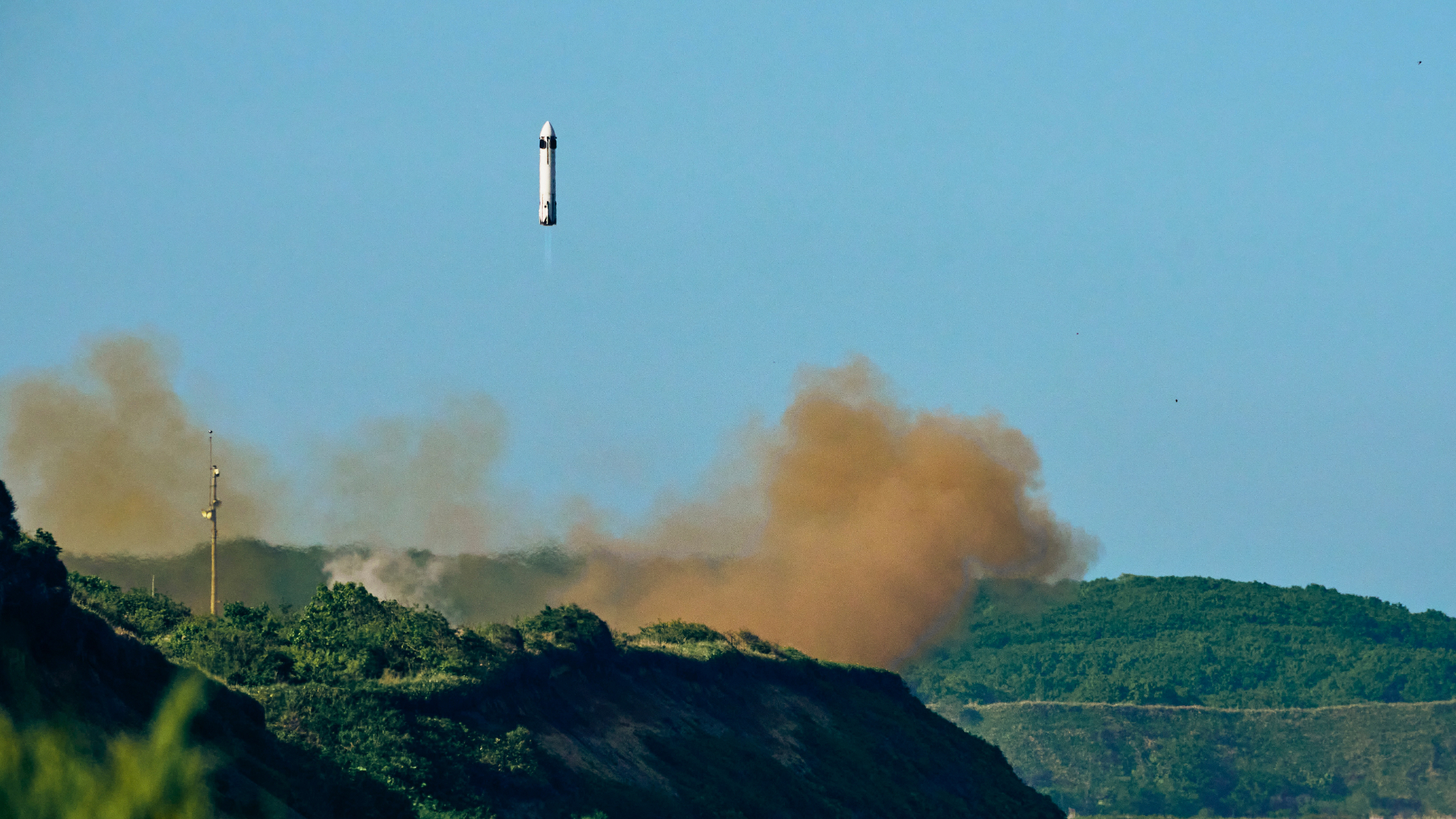
NASA's space shuttle fleet will never fly again, but the agency believes it still has plenty to learn from the iconic vehicles.
NASA technicians prepping the grounded shuttles for delivery to museums have been instructed to pull out and hang onto many different pieces, from the windows near the nose to the huge main engines near the orbiters' tails.
Agency engineers will study these parts to help inform development of future spaceships— and some of the hardware may even be used again.
"No other vehicle has had anywhere close to the same number of cycles on a lot of this hardware as the shuttle has," said Jonathan Krezel, who's in charge of the shuttle transition and retirement program at NASA headquarters in Washington, D.C. "Some of this stuff is 25 years old or more. So from the point of view of creating long-duration survivable space systems in the future, there's a lot of interest."
Making the shuttles "lickable"
The touchdown of Atlantis on July 21 marked the end of NASA's shuttle program after 30 years of operation and 135 space missions. Atlantis and the other two remaining orbiters, Discovery and Endeavour, are headed to museums, where they will teach and inspire the public for years to come.
Atlantis will retire to the Kennedy Space Center Visitor Complex in Florida, Discovery to the Smithsonian Air and Space Museum in Washington, D.C. and Endeavour to Los Angeles' California Science Center. [Photos: NASA's Last Shuttle Mission in Pictures]
Breaking space news, the latest updates on rocket launches, skywatching events and more!
But the shuttles aren't being ferried straight from the landing strip to the exhibit hall.
All three must undergo a lengthy decommissioning process, much of which is done for safety reasons. Anything that touched rocket fuel — the thruster system inside each shuttle's nose, for example — must be removed and scrubbed clean before it's reattached.
"We're making the vehicle not just safe for trained technicians to walk around, but safe for the public to walk around," Krezel told SPACE.com. "My favorite phrase is, to make it lickable."
Other parts will be permanently removed due to safety concerns. For example, flight-ready shuttles are studded with small explosive charges that perform various functions, such as deploying landing gear if normal systems fail. These pyrotechnics are all coming off, Krezel said.
But safety is not the only driver in this spaceship stripping. Research is a key factor as well.
Studying the shuttle, piece by piece
During their long operational lives, Endeavour flew 25 space missions, Atlantis 33 and Discovery a record 39. [NASA's Space Shuttle Program In Pictures: A Tribute]
"The space shuttles are unique in how they were reusable spacecraft. No one has flown the same hardware to space and back so many times before," said space history expert Robert Pearlman, editor of collectSPACE.com and a SPACE.com contributor. "NASA hopes to learn what effects, if any, such reuse has on spacecraft systems so as to apply those lessons to future vehicles."
So agency engineers have asked technicians to hoard some hardware for research purposes. The list of requests is long and varied, Krezel said, consisting of several thousand line items. (That doesn't necessarily translate into thousands of discrete shuttle parts, however, because many separate line items may describe a single part.)
"A lot of this stuff hasn't been taken off since the vehicles were first built. So it's a dataset that the agency has not had access to, ever," Krezel said. "That's a lot of components. That's valves, that's seals, that's actuators. That's various pieces of plumbing, filters, etc."
The shuttles' space-flown windows will also be removed, Krezel added. Researchers will examine them to determine the extent of micrometeoroid and orbital debris damage. NASA may eventually give the windows to the respective museums after analysis is complete.
Re-use, recycle
The biggest pieces of hardware that NASA will hang onto are the space shuttle main engines, which sit near the orbiters' tails. The agency may incorporate these huge engines into its next-generation heavy-lift rocket, known as the space launch system, Pearlman said.
NASA is considering re-using other shuttle parts, either in ground tests to support future systems or as part of the space-flown systems themselves. [Vote Now! The Best Spaceships of All Time]
For example, agency engineers have suggested recycling the shuttles' airlocks, Krezel said.
"Maybe you could Tinkertoy that with some other equipment and create some capability," Krezel said. "Those kind of ideas are always very interesting to entertain, but they require some rigorous engineering analysis to see if that makes sense."
Seemingly intact museum showpieces
While NASA wants to make sure it gets as much engineering value as possible out of the shuttles, the agency is also sensitive to the needs of the museums and the needs of history, Krezel said.
To that end, NASA is working closely with each museum to deliver orbiters that are as intact as possible, and that will inspire and educate the public as much as possible, he added.
So the museum displays will not be the equivalent of a half-stripped car on blocks in someone's yard. In fact, most museum visitors will probably not even notice the extent of NASA's tinkering, Pearlman said.
"While some exterior systems will be replaced with replicas — such as the main engines — the casual museum-goer should not be able to tell what was replaced and what remains as original," Pearlman told SPACE.com in an email interview.
Krezel said NASA is planning to have all of the shuttles decommissioned, prepped and delivered to their respective retirement homes by September 2012.
You can follow SPACE.com senior writer Mike Wall on Twitter: @michaeldwall. Follow SPACE.com for the latest in space science and exploration news on Twitter @Spacedotcom and on Facebook.
Join our Space Forums to keep talking space on the latest missions, night sky and more! And if you have a news tip, correction or comment, let us know at: community@space.com.

Michael Wall is a Senior Space Writer with Space.com and joined the team in 2010. He primarily covers exoplanets, spaceflight and military space, but has been known to dabble in the space art beat. His book about the search for alien life, "Out There," was published on Nov. 13, 2018. Before becoming a science writer, Michael worked as a herpetologist and wildlife biologist. He has a Ph.D. in evolutionary biology from the University of Sydney, Australia, a bachelor's degree from the University of Arizona, and a graduate certificate in science writing from the University of California, Santa Cruz. To find out what his latest project is, you can follow Michael on Twitter.
